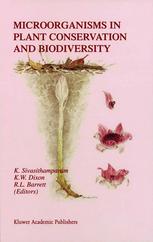

Most ebook files are in PDF format, so you can easily read them using various software such as Foxit Reader or directly on the Google Chrome browser.
Some ebook files are released by publishers in other formats such as .awz, .mobi, .epub, .fb2, etc. You may need to install specific software to read these formats on mobile/PC, such as Calibre.
Please read the tutorial at this link: https://ebookbell.com/faq
We offer FREE conversion to the popular formats you request; however, this may take some time. Therefore, right after payment, please email us, and we will try to provide the service as quickly as possible.
For some exceptional file formats or broken links (if any), please refrain from opening any disputes. Instead, email us first, and we will try to assist within a maximum of 6 hours.
EbookBell Team

4.1
20 reviewsPlant conservation is increasingly recognised as an outstanding global priority, yet despite considerable efforts over the last few decades, the number of threatened species continues to rise. The practice of plant conservation has for too long been a rather hit-or-miss mixture of methods. While microorganisms have been recognised as a crucial and essential element in supporting the lifecycles of plant species, there has been limited recognition of the relationships between macro level conservation facilitating ecosystem functioning at the micro level.
This book addresses the role of microorganisms in conservation - both their support functions and deleterious roles in ecosystem processes and species survival. Importantly, a number of authors highlight how microbial diversity is, itself, now under threat from the many and pervasive influences of man. What is clear from this volume is that like many contemporary treatments of plant and animal conservation, the solution to mitigate the erosion of biodiversity is not simple. This book represents an attempt to bring to the fore the ecological underwriting provided by microorganisms.